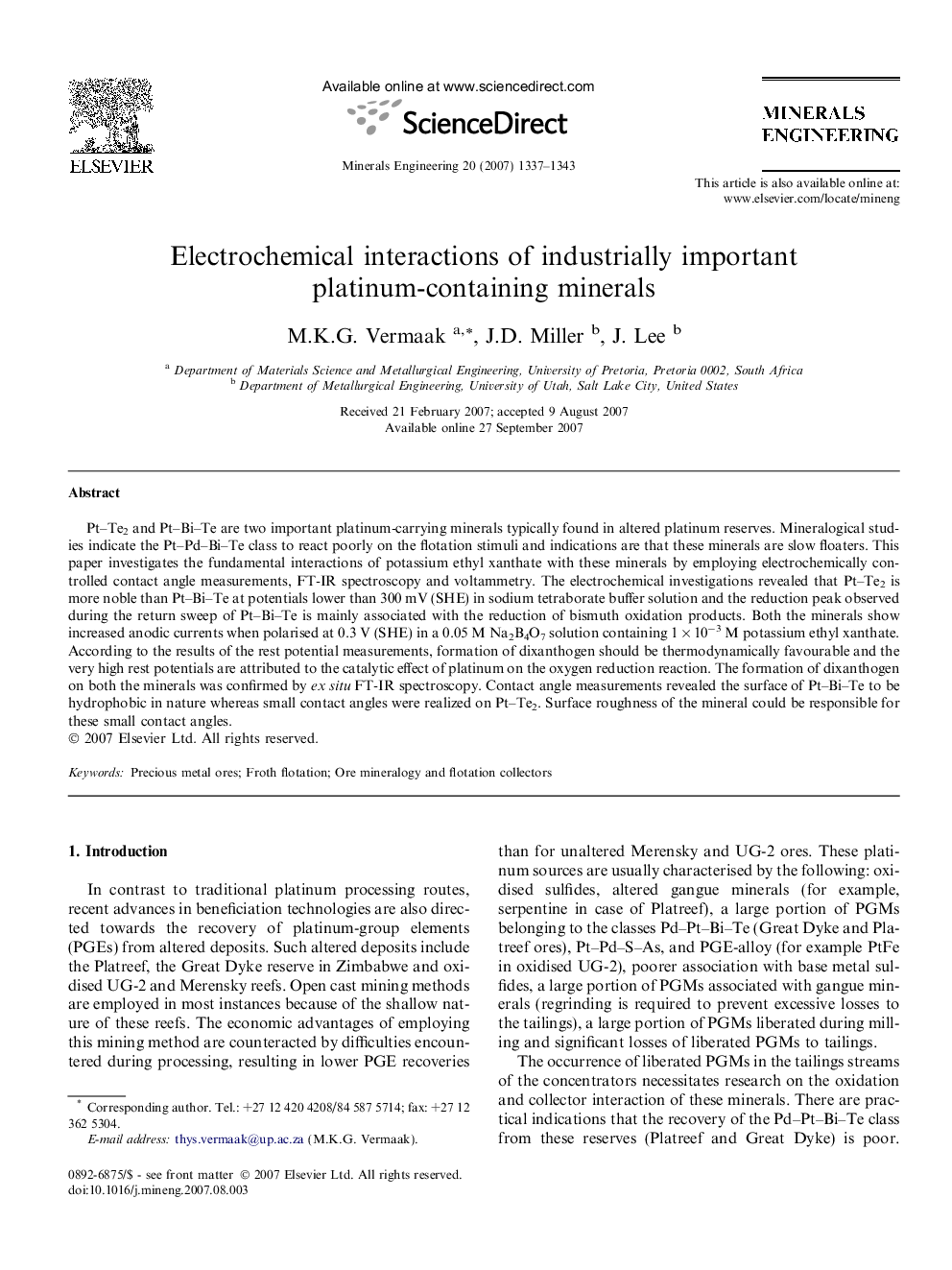| Article ID | Journal | Published Year | Pages | File Type |
|---|---|---|---|---|
| 234440 | Minerals Engineering | 2007 | 7 Pages |
Pt–Te2 and Pt–Bi–Te are two important platinum-carrying minerals typically found in altered platinum reserves. Mineralogical studies indicate the Pt–Pd–Bi–Te class to react poorly on the flotation stimuli and indications are that these minerals are slow floaters. This paper investigates the fundamental interactions of potassium ethyl xanthate with these minerals by employing electrochemically controlled contact angle measurements, FT-IR spectroscopy and voltammetry. The electrochemical investigations revealed that Pt–Te2 is more noble than Pt–Bi–Te at potentials lower than 300 mV (SHE) in sodium tetraborate buffer solution and the reduction peak observed during the return sweep of Pt–Bi–Te is mainly associated with the reduction of bismuth oxidation products. Both the minerals show increased anodic currents when polarised at 0.3 V (SHE) in a 0.05 M Na2B4O7 solution containing 1 × 10−3 M potassium ethyl xanthate. According to the results of the rest potential measurements, formation of dixanthogen should be thermodynamically favourable and the very high rest potentials are attributed to the catalytic effect of platinum on the oxygen reduction reaction. The formation of dixanthogen on both the minerals was confirmed by ex situ FT-IR spectroscopy. Contact angle measurements revealed the surface of Pt–Bi–Te to be hydrophobic in nature whereas small contact angles were realized on Pt–Te2. Surface roughness of the mineral could be responsible for these small contact angles.
